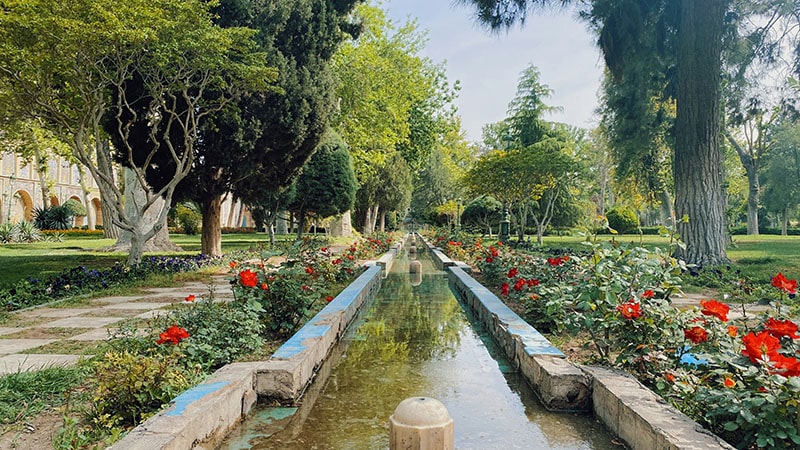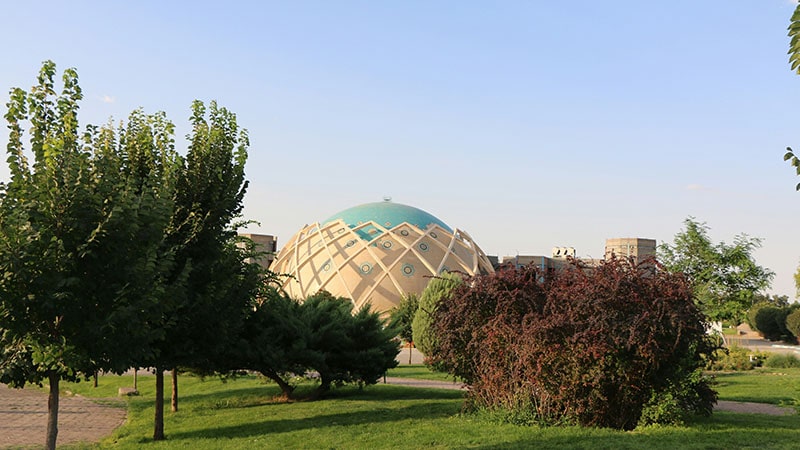Introduction: The Legacy of Persian Gardens
Persian gardens, known as “Bagh”, have been a symbol of paradise and cultural refinement for over 2,500 years. Their unique layout, water management, and botanical diversity exemplify ancient Persian architectural ingenuity. In 2011, UNESCO inscribed nine Persian gardens across Iran as a World Heritage site, recognizing their historical and artistic importance.
What Makes Persian Gardens Unique?
Unlike traditional European or Japanese gardens, Persian gardens are designed to create a microcosm of paradise on earth. The defining elements include:
- Charbagh Layout: A quadrilateral design divided by water channels into four sections symbolizing heaven’s four rivers.
- Water Features: Flowing streams, pools, and fountains not only provide beauty but also create a cooling microclimate in Iran’s often arid environment.
- Walled Enclosures: To protect from desert winds and create privacy, gardens are surrounded by walls and often shaded by tall trees.
- Plant Variety: Trees like cypress, pomegranate, and fruit trees provide shade, fragrance, and sustenance.
Top UNESCO-Listed Persian Gardens to Visit in 2025
Here are the nine official UNESCO-listed Persian gardens to include in your itinerary:
- Shazdeh Garden, Mahan: Located near Kerman, this 19th-century garden is famous for its terraces and water fountains.
- Fin Garden, Kashan: One of the oldest Persian gardens, it dates back to the Safavid era and was the site of the assassination of Amir Kabir.
- Bagh-e Dolatabad, Yazd: Known for its tall windcatcher (badgir) and elegant layout, representing desert garden architecture.
- Chehel Sotoun, Isfahan: A palace garden built in the 17th century with a reflecting pool and intricate tile work.
- Eram Garden, Shiraz: Famous for its diverse flora and historic pavilion.
- Hassanlu Garden, West Azerbaijan: A lesser-known garden with a rich heritage near Lake Urmia.
- Shahzadeh Garden, Kerman: Another splendid example of Qajar dynasty garden design with terraces and flowing water.
- Bagh-e Jahan Nama, Mashhad: A historic garden showcasing typical Persian design elements.
- Shams-ol-Emareh Garden, Tehran: Integrates garden design with urban architecture.
Visiting Tips for Persian Gardens
To make the most of your visit to Persian gardens, consider these practical tips:
- Best Time to Visit: Spring (March-May) and autumn (September-November) offer pleasant weather and blooming flora.
- Guided Tours: Hiring a knowledgeable local guide enhances your understanding of the garden’s symbolism and history.
- Respect Local Customs: Gardens are peaceful places; avoid loud noises and respect signage.
- Photography: Most gardens allow photography, but drone use is usually restricted.
- Entrance Fees: Fees vary; some gardens require tickets purchased on-site or online.
The Role of Persian Gardens in Iranian Culture
Persian gardens represent more than just beautiful landscapes; they are deeply connected to Persian philosophy, poetry, and lifestyle. Persian poets like Hafez and Saadi have often used garden imagery to convey spiritual and romantic ideas. The garden is a symbol of harmony between man and nature, reflecting ideals of balance, beauty, and tranquility.
How to Reach the Persian Gardens
Many Persian gardens are accessible by public transport, private car, or guided tours:
- Kashan (Fin Garden): Approximately 2.5 hours from Tehran by car or bus.
- Shiraz (Eram Garden): Within Shiraz city, accessible by taxi or bus.
- Kerman (Shazdeh Garden): About 15 km from Kerman city; taxis or local tours available.
- Yazd (Dolatabad Garden): Located near Yazd, reachable by taxi or car.
Preservation and Challenges
Persian gardens face threats from urbanization, water scarcity, and climate change. Conservation efforts by Iranian cultural heritage organizations and UNESCO focus on protecting these sites through sustainable water management, restoration projects, and public awareness campaigns.
Final Thoughts: Experiencing Persian Gardens in 2025
Visiting Iran’s Persian gardens offers travelers a unique glimpse into the country’s rich cultural heritage and artistic legacy. In 2025, these gardens remain peaceful oases in busy cities and arid landscapes, inviting visitors to reflect and connect with nature.
Planning your trip with expert advice from Honest Guide Iran ensures you don’t miss these treasures. Contact us today for personalized travel planning and exclusive garden tours.


